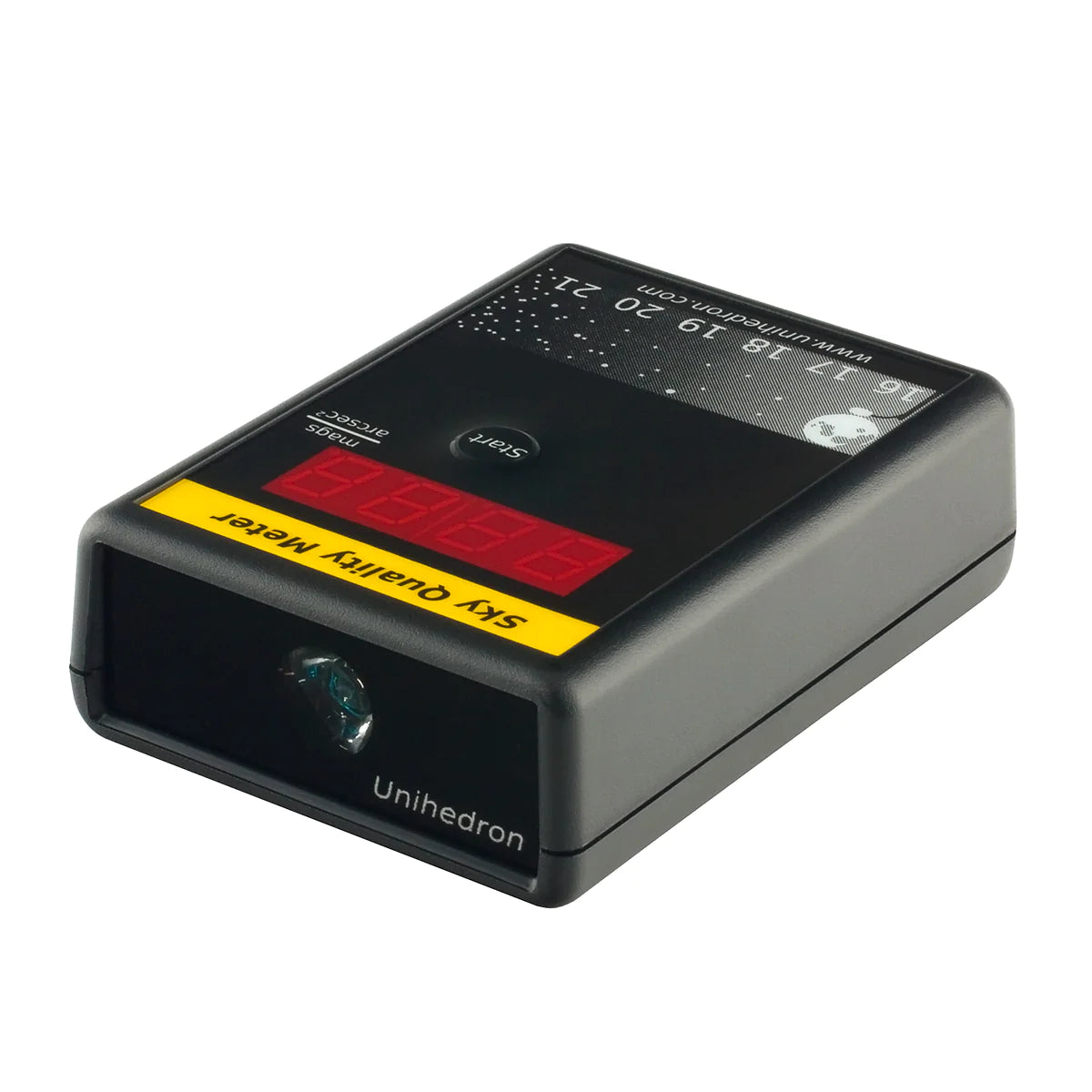
Unihedron Sky Quality Meter - their use in Astronomy
If you are a passionate astronomer, you already know that the quality of the sky is crucial to obtaining good observations. And that's where the Unihedron Sky Quality Meter (SQM-L) comes in. This innovative device has revolutionized the way astronomers measure sky brightness and has quickly become an essential tool for both amateur and professional astronomers. In this blog post, we will explore what the Unihedron Sky Quality Meter is and how it is useful for astronomy.

What is the Unihedron Sky Quality Meter?
The Unihedron Sky Quality Meter is a small device that measures the brightness of the sky in magnitudes per square arcsecond. It is a highly sensitive photometer that can accurately measure the sky brightness even in light-polluted areas. The device uses a photodiode that is sensitive to the light at the zenith, the point directly above the observer. The device is pointed upward and takes measurements of the light falling on the sensor, which is then displayed on a screen.
The device comes in various models, each with a different measurement range. The most popular model is the SQM-L: this model is sensitive enough to measure the sky brightness even in the darkest locations, making it an ideal tool for astronomers.
How is the Unihedron Sky Quality Meter useful for astronomy?
The Unihedron Sky Quality Meter is a versatile tool that is useful for a variety of astronomical applications. Here are a few ways that it can be used:
- Measuring Sky Brightness
The Unihedron Sky Quality Meter is primarily used to measure the brightness of the sky. This is an essential parameter in astronomy, as it affects the visibility of celestial objects. With the SQM, astronomers can quickly and accurately measure the sky brightness and determine the quality of the observing conditions.
- Light Pollution Monitoring
The Unihedron Sky Quality Meter can also be used to monitor light pollution. Light pollution is a significant problem for astronomers, as it not only makes observing difficult but also affects the health and behavior of wildlife. By measuring the sky brightness in different locations, astronomers can determine the level of light pollution and work to mitigate it.
- Site Selection
The Unihedron Sky Quality Meter is also useful for selecting observing sites. By measuring the sky brightness in different locations, astronomers can determine the best places to observe from. This can be especially helpful for amateur astronomers who may not have access to dedicated observing sites.
- Public Outreach
The Unihedron Sky Quality Meter is also a valuable tool for public outreach. By showing people the difference in sky brightness between different locations, astronomers can educate the public about the effects of light pollution and the importance of preserving dark skies.
Conclusion
The Unihedron Sky Quality Meter is a powerful tool that has revolutionized the way astronomers measure sky brightness. With its high sensitivity and accuracy, it has quickly become an essential tool for both amateur and professional astronomers. Whether you are measuring sky brightness, monitoring light pollution, selecting observing sites, or engaging in public outreach, the Unihedron Sky Quality Meter is a versatile tool that can help you achieve your goals. So if you are an astronomer looking to improve your observations, consider investing in a Unihedron Sky Quality Meter today!
